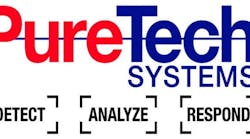This article originally appeared in the August 2022 issue of Security Business magazine. When sharing, don’t forget to mention Security Business magazine on LinkedIn and @SecBusinessMag on Twitter.
After almost 35 years of being a security systems integrator, I thought I knew my way around the office and felt I was a competent manager. I was experienced in both sales and operations. I ran a well-run shop: Low project slip, high customer satisfaction ratings, little to no inventory issues, high employee utilization ratios, low employee turnover, and solid EBITDA. We were a well-oiled machine.
Over the last two-plus years as we faced the impacts of COVID-19, I have realized that I didn’t have a clue, and I am just learning new ways of taking care of our customers, employees, and shareholders. I am confident that I am not alone here.
The laundry list of new challenges is long, but there are two that seem to have had the biggest impact on our businesses: Communication and inventory magagement.
Operating and doing business during a global pandemic is challenging but rewarding if you are willing to learn new tricks and reinvent how your team communicates, communicate with your customer, and execute on current and future backlog.
I want to say that there is a light at the end of the tunnel, and COVID and the global supply chain issues will be gone at some point; however, if the past two years have taught us anything, it is to be prepared for the unexpected.
Communication
Let’s start with what happened two and a half years ago. We shut the office down and sent everyone to work from home. Most of our customers did the same thing.
Before this happened, if our customers had a problem, they would call the office, speak to the service coordinator or office manager, tell them what the issue was, and the team would take it from there. The service coordinator would walk down the hall, find out who was available, call the customer back, set up the schedule, and assign the technician. The tech would then drive over to the customer site, meet the customer, fix the problem with parts in inventory, sitting on the truck or from the nearest supply house. Service would close out the ticket, bill the customer, and the rest is history.
The key takeaway is that regardless of the steps, they were all routine, with the same steps followed day in and day out without fail.
After years of doing things the same way, everyone in the chain of custody, customer, and employees understood what to expect. Additionally, the little things required along the way that ensured success just happened. Coffee talk about how particular customers liked things done, who the field technician needed to coordinate with at the site when he arrived, who had certain spare parts on their trucks, or what was on the shelves at the shop were common knowledge. People talked, we interacted, communicated, staff coordination meetings, and had coffee or lunch with our customers. It was just the way things were done; being together in the same place and talking was key to our success, and then it was gone. Looking back, we had no clue how important this little stuff was to the success of our business until we didn’t do it anymore.
In today’s world, documenting the standard operating procedures required to service and support our customers to achieve the same level of customer satisfaction as in the past is an absolute requirement.
Often the person calling in the problem only has part of the information. They are not at the site and often won’t be there when the technician arrives. In some cases, nobody will be there, so it’s essential that whoever is dispatched is familiar with the location of critical equipment such as the head end, power supplies, and IT equipment. Maps, system drawings, and other proprietary system information must be readily available to the technician before arriving at the site. This same level of documentation is required after the call to ensure that everything done during the call is captured electronically to be presented to the customer as part of the close-out process. Bottom line, it has all become very electronic and automated, and if not done correctly, it can cause significant issues internally and the customers.
Forgetting the little stuff in today’s world often leads to misinformation or a customer upset because things were not done per their request. Indeed, they were, but the information was not captured and presented correctly. There is a big difference between talking to someone about what happened and how you corrected their issue vs. putting it in writing in a way that they clearly understand and comprehend. Everyone in the food chain is learning a new way of doing things, and it takes time and patience, much of which we don’t have anymore because we are all inundated with Teams Meetings or Zoom Meeting requests.
Inventory
Now, the elephant in the room: Spare parts and inventory. In all my years, inventory was frowned upon, and within the C-Suite, it was a four-letter word. Nobody in their right mind wanted security hardware sitting on shelves, either in the shop or on a technician’s vehicle.
Stocking distributors took full advantage of this philosophy and sold on the benefits of stocking orders and just-in-time inventory, with the added benefit of counter sales. If you need it, we have it. See us! No messy list, no warranty issues, problem solved.
Fast forward to today, and what I wouldn’t give to have several varieties of video surveillance cameras or a stack of access control proximity readers sitting around in the shop.
The good news is that backlogs have never been as high as now. Still, without the necessary parts to execute the work, you cannot get the job started, you can’t keep your team busy, and you can’t create the steady revenue and profit needed to keep the shareholders happy. This impacts every part of our business and not in a good way.
Unfortunately, integrators need to quickly figure out how to deal with this massive issue as specific parts are just not available. In some cases, the manufacturer or the friendly stocking distributor that sold you on just-in-time inventory or over-the-counter sales cannot even provide expected shipping dates. What’s the answer?
Let’s start again with communication. It is critical to communicate with customers and let them know what is going on. In some cases, bringing the manufacturer into the conversation will soften the blow and add credibility to the message that the plastic shortage, the chip shortage crisis, and the impact COVID has had on the supply chain are real and not going away anytime soon.
Proper planning on projects in the works, future projects on the board, and standardization on specific hardware enable the savvier integration firms to place stocking orders or advance equipment orders with their favorite distribution partner.
The better news is that several more progressive stocking distributors are working closely with their integration partners on advance equipment orders and will hold the inventory for them until everything arrives for the project. Another trick might be placing orders for the same equipment with multiple distributors simultaneously.
The inventory issue is so hot that the integrator will need the inventory and can do an internal cost transfer to another project, or the distributor will take it back without a restock fee and fill another order.
The other strategy here is to look for alternative sources for the same or similar security device, depending on the use-case. Many head-end systems are open to multiple technology manufacturers, and open standards such as ONVIF have opened the door to mixing and matching technology manufacturers, especially with some of the advanced VMS options out there.
On the access control side of the house, shortages and delays on equipment from one of the largest providers out there have a massive impact on the market. Still, this one is much harder to solve, as high-assurance access cards from specific manufacturers do not play well with others.
Depending on the particular access card format being used, there are other access control reader manufacturers. Some of them have substantial inventory, so it is just a matter of doing some engineering and testing to determine if there is a solution that works.
Rob Hile is the Florida Branch Manager for integrator GC&E Systems Group and is a 30-plus-year veteran of the security industry, serving in various leadership roles with both integrators and manufacturers.


